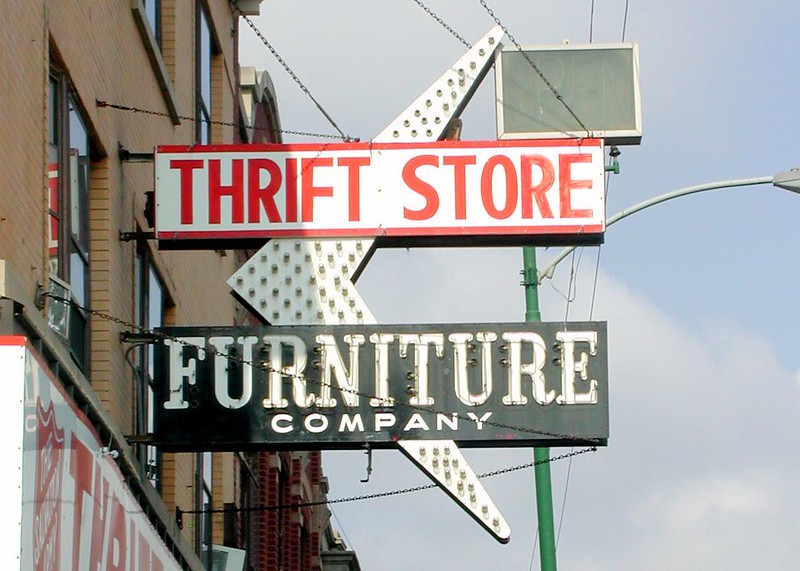Thrifting Rises To Challenge Fast Fashion
Picasa 2.0
Sign of a thrift store somewhere unknown, but gives a great example of what thrift store signs might look like.
Sep 7, 2021
The reign of fast fashion retailers is being continually challenged by the rise of secondhand shopping. Students must wade through the decision of fast fashion or a more sustainable option, thrifting.
The price differences between these options can be steep. Many big retailers, whether physical or online, can charge upwards of 50 dollars for a pair of jeans, or 20 dollars for a shirt.
“I can get like five pairs of jeans for 30 bucks,” junior Skylar Allen said.
Online retailers like SHEIN have gripped the fashion scene in recent times, sporting their deep discounts and variety of styles on their website. Many teens shop at places like SHEIN, but the rise of thrifting and secondhand shopping has created a strong contender for fast fashion retail.
“I think people should thrift more, it’s inexpensive and you can find a lot more options,” Allen said.
The nature of fast fashion ensures a cycle of what’s “in” and then quickly phases out to be forgotten and in a landfill. According to the Environmental Protection Agency, 84% of clothes end up in landfills, 5% of all landfill space. That’s the “fast” in fast fashion. The cycle continues and continues, and today’s young adults adhere.
“That’s a waste of money,” Allen said.
Instead of adhering to fast fashion, many teens today are shopping at places like Goodwill, Savers and The Salvation Army. Local places like Savers and Maj-R Thrift are great places to find used items, as well as the website Goodfair. In addition to helping the environment, thrifting can be a way to find eccentric and rare pieces, as well as save lots of money.







McKenzie Sullivan • Sep 9, 2021 at 11:13 am
i love this and i love thrifting.